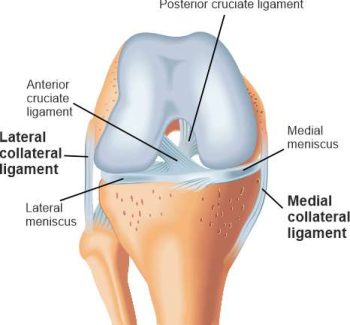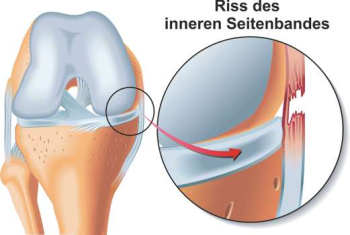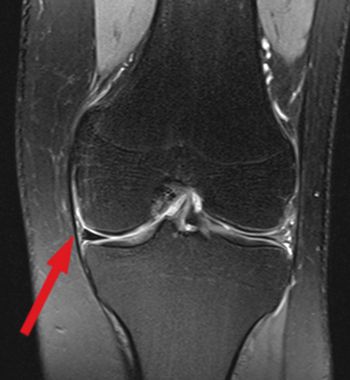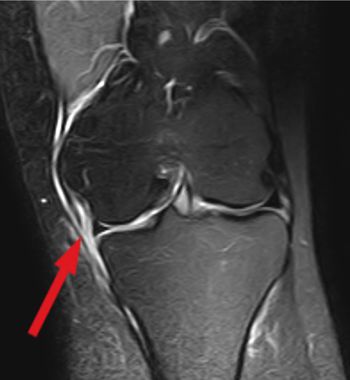Collateral ligament injury of the knee, MCL injury
Inhaltsverzeichnis
How does a collateral ligament injury occur?
The collateral ligaments are important stabilisers and prevent the knee joint from opening sideways. There is an inner (medial) and an outer (lateral) collateral ligament. Injuries to the inner collateral ligament are much more common than injuries to the outer collateral ligament. The cause is usually a sports injury that causes overstretching on the inside and twisting of the knee. The medial collateral ligament (MCL) is fused with the medial meniscus. This means that the medial meniscus is often also injured in the case of a torn MCL.


Symptoms of collateral ligament injury
In the case of a torn collateral ligament, pain usually occurs on the inside (medial collateral ligament) or on the outside (lateral collateral ligament). The pain is often accompanied by swelling and joint effusion. Sometimes the affected person notices a side instability in the knee joint.
Diagnostics for collateral ligament injuries
A doctor can make a good diagnosis of a torn collateral ligament on the basis of a precise description of how the injury occurred, the typical symptoms and a thorough clinical examination in which the side stability of the knee joint is checked. An X-ray examination rules out bony concomitant injuries. Magnetic resonance imaging (MRI) can be used to assess the extent of the collateral ligament injury and any accompanying injuries (meniscus tear, cruciate ligament tear).


Therapy for collateral ligament injuries
Before treating a injured collateral ligament, possible concomitant injuries must always be clarified. In almost all cases, an isolated tear of the collateral ligament can be treated conservatively, i.e. with splint immobilisation and physiotherapy.